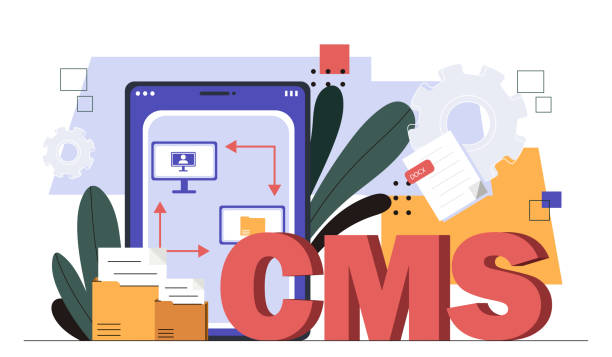Mastering Web Development: The Essential Techniques for Architectural Excellence

In the rapidly evolving landscape of technology, the term “web developer” has expanded far beyond simple knowledge of HTML and CSS. Today, mastery demands a deep, architectural understanding of systems, optimized performance, and robust security protocols. Moving beyond the novice stage requires disciplined study and the adoption of professional methodologies.
This comprehensive guide delves into the essential techniques, concepts, and code disciplines necessary to transition from a functional coder to a truly masterful web architect.
1. The Foundational Pillars: Deeper Understanding of the Triad
True mastery begins not with the latest framework, but with an exhaustive understanding of the core technologies—HTML, CSS, and JavaScript—viewed not as separate tools, but as an integrated system.
1.1 HTML: Semantic Structure and Accessibility
A novice uses <div> tags indiscriminately. A master utilizes Semantic HTML. Semantic markup provides meaning to content, crucial for SEO, maintainability, and, most importantly, accessibility (A11Y).
Essential Technique: Semantic Layout
Instead of relying on IDs and classes to define structure, use elements that define their content’s purpose:
<header>: Introduces content.<nav>: Contains navigational links.<main>: The main, unique content of the document.<article>: Self-contained, redistributable content (e.g., a blog post).<aside>: Content only tangentially related to the main content.
When integrating dynamic content, understanding the roles of ARIA (Accessible Rich Internet Applications) attributes is non-negotiable, ensuring interactive elements are usable by assistive technologies.
Quote: “The structure you build today is the foundation for performance tomorrow. Semantic HTML is non-negotiable; it’s the blueprint for universal access.” – Dr. Evelyn Reed, Chief Architect at Stellar Tech
1.2 CSS: Specificity, Layout Models, and Methodology
CSS mastery involves controlling the cascade, managing complexity, and ensuring responsiveness without sacrificing performance.
Essential Technique A: Advanced Layout (Flexbox & Grid)
While floats and table layouts have historical significance, modern layout is defined by CSS Grid and Flexbox.
- Flexbox: One-dimensional alignment (row or column). Perfect for navigation bars, component alignment, and distributing space within a single axis.
- CSS Grid: Two-dimensional layout (rows and columns simultaneously). Essential for defining the overarching page structure (header, sidebar, content area) with precise control.
Essential Technique B: CSS Methodologies (BEM)
As projects scale, CSS stylesheets become notorious for maintenance nightmares and specificity wars. Methodologies like BEM (Block, Element, Modifier) solve this by enforcing strict naming conventions that reduce dependency on cascading and global scope.
/* BEM Example */
.card { /* Block */
padding: 20px;
}
.card__title { /* Element */
font-size: 1.5em;
}
.card--featured { /* Modifier */
border: 2px solid gold;
}
This ensures styles are encapsulated, portable, and predictable, significantly improving teamwork and long-term project viability.
1.3 JavaScript: The Engine Room (Scope, Closures, and Asynchronicity)
JavaScript is the operational core of the modern web. Mastery requires moving beyond simple syntax functions to grasp the underlying execution model.
Essential Technique A: Understanding Scope and Closures
A closure is the combination of a function bundled together (enclosed) with references to its surrounding state (the lexical environment). This technique is fundamental for creating private variables and maintaining state in highly modular applications.
Example of a Closure for State Preservation:
function createCounter() {
let count = 0; // 'count' is defined in the lexical environment
return function() {
count++; // Inner function 'closes over' and accesses 'count'
console.log(count);
};
}
const myCounter = createCounter();
myCounter(); // Output: 1
myCounter(); // Output: 2
Essential Technique B: Asynchronous Programming and the Event Loop
The single-threaded nature of JavaScript means execution must be non-blocking. Mastering modern JS requires deep knowledge of Promises and the async/await syntax, which provides syntactic sugar over Promises, making asynchronous code look synchronous.
Crucially, developers must understand the Event Loop. The Event Loop is how JavaScript handles operations like network requests and timers without freezing the user interface. It manages three key areas: the Call Stack, the Heap, and the Message Queue (or Callback Queue). Understanding how microtasks (Promises) and macrotasks (Timers, I/O) are prioritized is key to debugging performance issues related to concurrency.
2. Frontend Sophistication: Frameworks, State Management, and Performance
Modern frontend development centers around robust frameworks that manage complexity, especially the synchronization between data and the Document Object Model (DOM).
2.1 Component Architecture and the Virtual DOM
Frameworks like React, Vue, and Angular leverage component-based architecture, allowing developers to build encapsulated, reusable pieces of UI.
Essential Technique: Life Cycle Management
In frameworks like React, mastery involves understanding the Component Lifecycle. A senior developer knows not just how to use a hook like useEffect, but when to trigger specific side effects (data fetching, subscriptions, manual DOM manipulation) and, most importantly, how to correctly clean them up to prevent memory leaks.
Deep Dive: The Virtual DOM
The reason frameworks are fast is often attributed to the Virtual DOM (VDOM). The VDOM is an abstraction of the actual browser DOM. When data changes, the framework creates a new VDOM tree and compares it efficiently against the previous VDOM tree (a process called diffing). It then calculates the minimum number of changes required and applies only those specific updates to the real DOM, significantly reducing costly manipulation operations.
2.2 Mastering State Management
As applications grow, managing shared data (state) becomes the primary challenge. Naively passing props down multiple levels (prop drilling) leads to unmaintainable code.
Essential Technique: Centralized State Containers
Techniques like Redux, MobX, or the React Context API/Zustand offer solutions for centralized state.
- Redux/Flux Pattern: Emphasizes a strict unidirectional data flow. All state changes must occur through explicit actions and reducers (pure functions). This forces predictability and simplifies debugging complex state transitions.
- Immutability: A cornerstone of reliable state management. State should never be directly modified. Instead, a new copy of the state object is created with the required changes. This enables optimized rendering (as frameworks can quickly check if an object reference has changed) and robust time-travel debugging.
Quote: “In high-scale frontend architecture, predictability is power. State management systems enforce rigid data flows not to constrain you, but to save you from inevitable complexity.” – Elena Petrova, Lead Frontend Engineer at Quantum Labs
2.3 Frontend Optimization and Bundling
Performance is not a feature; it is a prerequisite. Developers must optimize for measurable metrics like First Contentful Paint (FCP) and Time to Interactive (TTI).
Essential Technique: Code Splitting and Tree Shaking
Modern applications rely on bundlers (like Webpack, Rollup, or Parcel).
- Tree Shaking: Eliminating unused code from the final bundle. By relying on ES Module syntax (
import/export), bundlers can statically analyze the code and discard functions or libraries that were imported but never invoked. - Code Splitting/Lazy Loading: Instead of loading the entire application bundle upfront, code splitting divides it into smaller chunks. Developers use dynamic imports (
import('path/to/module')) in conjunction with technologies like React’sSuspenseto load components and accompanying JavaScript only when they are needed (e.g., when a user clicks a specific route).
3. Backend Architecture and API Excellence
The backend is the brain of the application, managing data, logic, and security. Mastery demands choosing the right architecture (Monolith, Microservices, Serverless) and designing robust communication protocols.
3.1 Choosing the Right Backend Technology
While various languages (Python, Java, Go, Ruby) serve well, Node.js remains dominant in the full-stack MERN/MEAN ecosystem due to its non-blocking I/O model.
Deep Dive: Node.js and Non-Blocking I/O
Node.js excels at I/O-bound tasks (database queries, external API calls) because it uses an event-driven architecture. When a request comes in, instead of blocking the thread until the I/O operation completes (like traditional synchronous models), Node.js immediately registers a callback and moves on to process the next request. This maximizes throughput, making it highly suitable for real-time applications and high-concurrency environments.
3.2 Designing Robust APIs (REST vs. GraphQL)
The API defines how the client and server communicate.
Essential Technique A: RESTful Principles
A master understands that REST (Representational State Transfer) is more than just using JSON; it’s about adhering to architectural constraints:
- Statelessness: Each request contains all necessary information; the server does not store client session information between requests.
- Resource Identification: Using specific URIs (e.g.,
/api/users/101). - Use of Standard Methods: Leveraging HTTP verbs correctly:
GET: Retrieve resources (safe and idempotent).POST: Create new resources.PUT/PATCH: Update resources (PUTreplaces the whole resource;PATCHapplies partial modifications).DELETE: Remove resources.
Essential Technique B: Understanding GraphQL
For complex clients requiring highly specific data, GraphQL offers significant advantages over traditional REST:
- Efficiency: Clients request only the data fields they need, eliminating over-fetching (receiving too much data) and under-fetching (requiring multiple trips to the server).
- Type System: GraphQL uses a strong type system to define the available data, providing excellent developer tooling and validation.
3.3 Database Technologies and Data Modeling
Mastery requires understanding when to use SQL (Relational) databases and when to use NoSQL (Non-Relational) databases.
- SQL (PostgreSQL, MySQL): Ideal for applications requiring complex transactional integrity, ACID compliance (Atomicity, Consistency, Isolation, Durability), and predefined, stable schemas. Mastery involves writing optimized queries, understanding indexing, and performing normalization to avoid data redundancy.
- NoSQL (MongoDB, Cassandra): Ideal for high-volume, rapidly changing data, or data structures that don’t fit well into rigid rows and columns. Key considerations include eventual consistency and the use of de-normalization for speed.
Quote: “A poorly designed database index can bring the fastest server to its knees. Backend excellence is measured by the efficiency of your data retrieval and the security of your endpoints.” – Michael Chen, Database Systems Specialist
4. Operational Mastery: DevOps, Deployment, and Infrastructure
A developer’s job is not done when the code works locally. Mastery extends into how the application is built, tested, deployed, and monitored in production. This is the domain of DevOps.
4.1 Git Mastery and Workflow
Basic Git knowledge (commit, push, pull) is insufficient. Professional environments demand proficiency in complex scenarios:
- Rebasing vs. Merging: Understanding when to use
git rebase(to maintain a clean, linear history) versusgit merge(to preserve historical context). - Branching Strategies: Implementing established models like Gitflow (feature branches, develop branch, master/main branch) to manage concurrent development and release cycles predictably.
- Advanced Tools: Utilizing
git cherry-pick(to move a specific commit) andgit stash(to temporarily save incomplete work).
4.2 Continuous Integration and Continuous Delivery (CI/CD)
CI/CD pipelines automate the process of building, testing, and deploying code, ensuring that every merged code change is immediately validated and ready for release.
Essential Technique: Pipeline Automation
Using tools like GitHub Actions, GitLab CI, or Jenkins, developers write configuration files (often YAML) that define the exact steps for deployment:
- Build Stage: Compile source code, run the Webpack build, and package assets.
- Test Stage: Execute unit tests, integration tests, and linting.
- Deployment Stage: Push the tested artifacts to staging or production environments.
This automation drastically reduces human error and increases deployment frequency and reliability.
4.3 Containerization with Docker
Docker is essential for solving the “it works on my machine” problem by ensuring environments are consistent across development, testing, and production.
Deep Dive: The Dockerfile
A master understands how to write an efficient Dockerfile that defines the application environment:
# Start from a minimal base image
FROM node:20-alpine
# Set the working directory
WORKDIR /usr/src/app
# Copy package files first to leverage build cache
COPY package*.json ./
RUN npm install
# Copy application source code
COPY . .
# Build the application (if applicable)
RUN npm run build
# Expose the necessary port
EXPOSE 8080
# Command to run the application
CMD [ "npm", "start" ]
By utilizing multi-stage builds and carefully ordering instructions, senior developers create small, secure, and rapidly deployable images. For production scale, orchestration tools like Kubernetes (K8s) become the next level of operational mastery, managing deployment, scaling, and self-healing across clusters of containers.
5. The Architecture of Learning: Security and Soft Skills
Technical ability opens doors, but long-term mastery is sustained by discipline in security, quality assurance, and continuous self-improvement.
5.1 Security: Defense in Depth
Security is not a separate step; it must be ingrained into every stage of development.
Essential Technique: Input Validation and Output Encoding
- Input Validation: Never trust client-side input. All input must be validated on the server side to prevent injection attacks (SQL injection, NoSQL injection).
- Output Encoding: Before rendering user-supplied data back to the browser, it must be properly encoded to prevent Cross-Site Scripting (XSS) attacks.
Other critical techniques include implementing robust authentication (JWT or OAuth), correctly setting HTTP security headers (CSP, HSTS), and understanding common vulnerabilities defined by OWASP (Open Web Application Security Project).
5.2 Testing Paradigms
Robust testing provides the safety net required for rapid development cycles. Mastery involves knowing what to test and how heavily to focus on each type (the Testing Pyramid):
- Unit Tests (Base): Quick, isolated tests to verify the smallest unit of code (a function or class method). Tools: Jest, Mocha.
- Integration Tests (Middle): Verify that different parts of the application (e.g., frontend component communicating with an API endpoint) work together correctly.
- End-to-End (E2E) Tests (Apex): Simulate a real user journey through the application (e.g., registering, logging in, making a purchase). Tools: Cypress, Selenium.
5.3 Continuous Learning and Documentation
The tools, frameworks, and best practices of web development change every 18 months. Master developers dedicate time to deliberately learning new paradigms.
Quote: “Mastery in web development is not a destination defined by what you know, but a continuous process defined by how fast you can adapt. The moment you stop learning, you start depreciating.” – Alex Hernandez, Founder of DevPath Seminars
Master developers also produce clear, concise, and structured documentation—for the codebase (inline comments), for system architecture (READMEs and diagrams), and for API endpoints (OpenAPI/Swagger specifications). Writing clear documentation solidifies complex requirements and ensures the longevity and maintainability of the system.
Conclusion: Building the Legacy of Code
Mastering web development is an intensive, rewarding journey that demands rigorous application of technical knowledge across domains—from the semantic structure of HTML to the architectural planning of deployment pipelines. It requires leaving behind the habit of merely making things work, and embracing the discipline of building systems that are robust, scalable, secure, and maintainable.
By focusing on deep foundational understanding, optimizing for performance, architecting robust backend systems, and adopting professional DevOps practices, you move beyond being a coder and evolve into a true web development master. The codebase you leave behind is your legacy; ensure it is structurally sound and built for the future.





